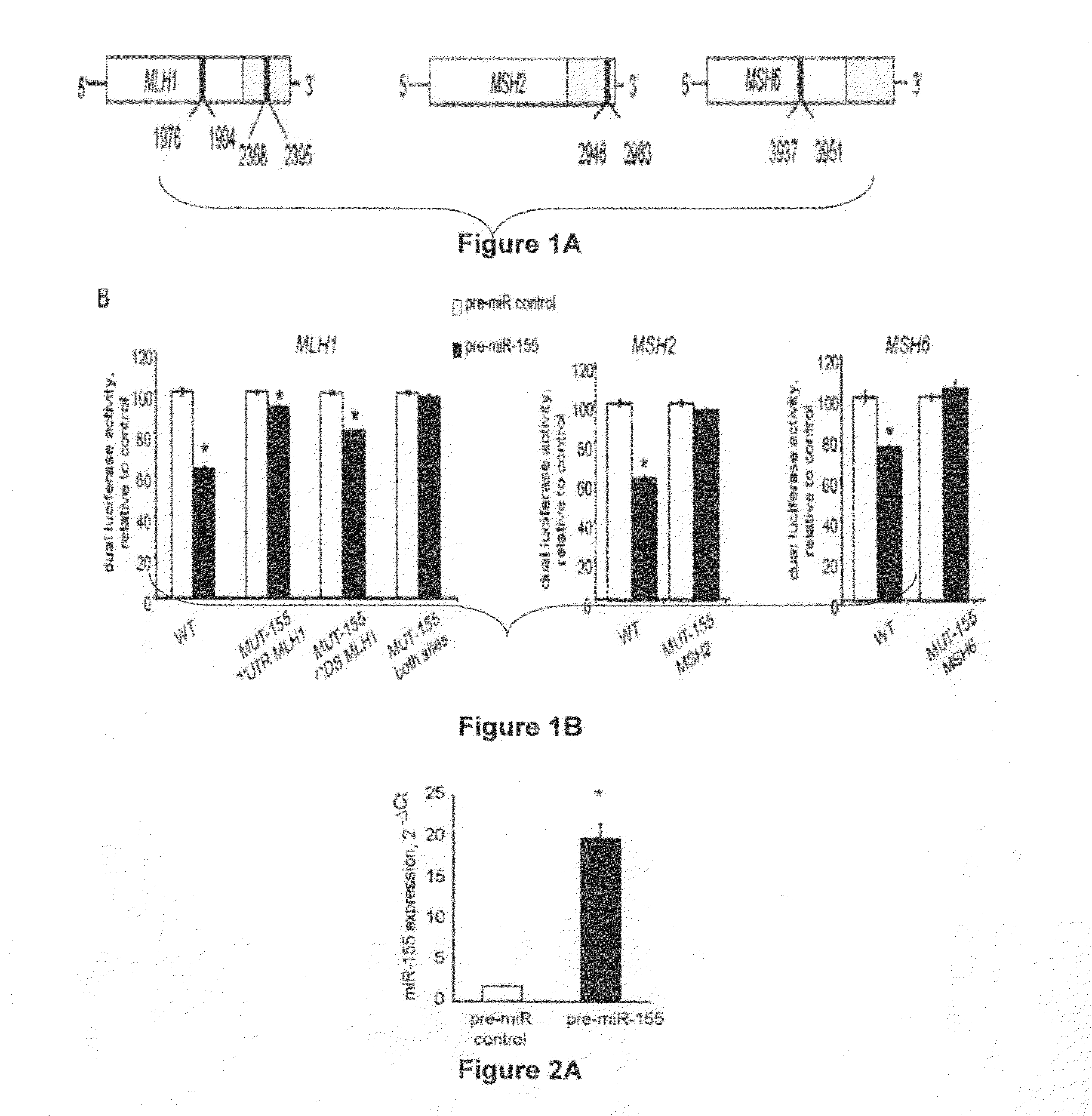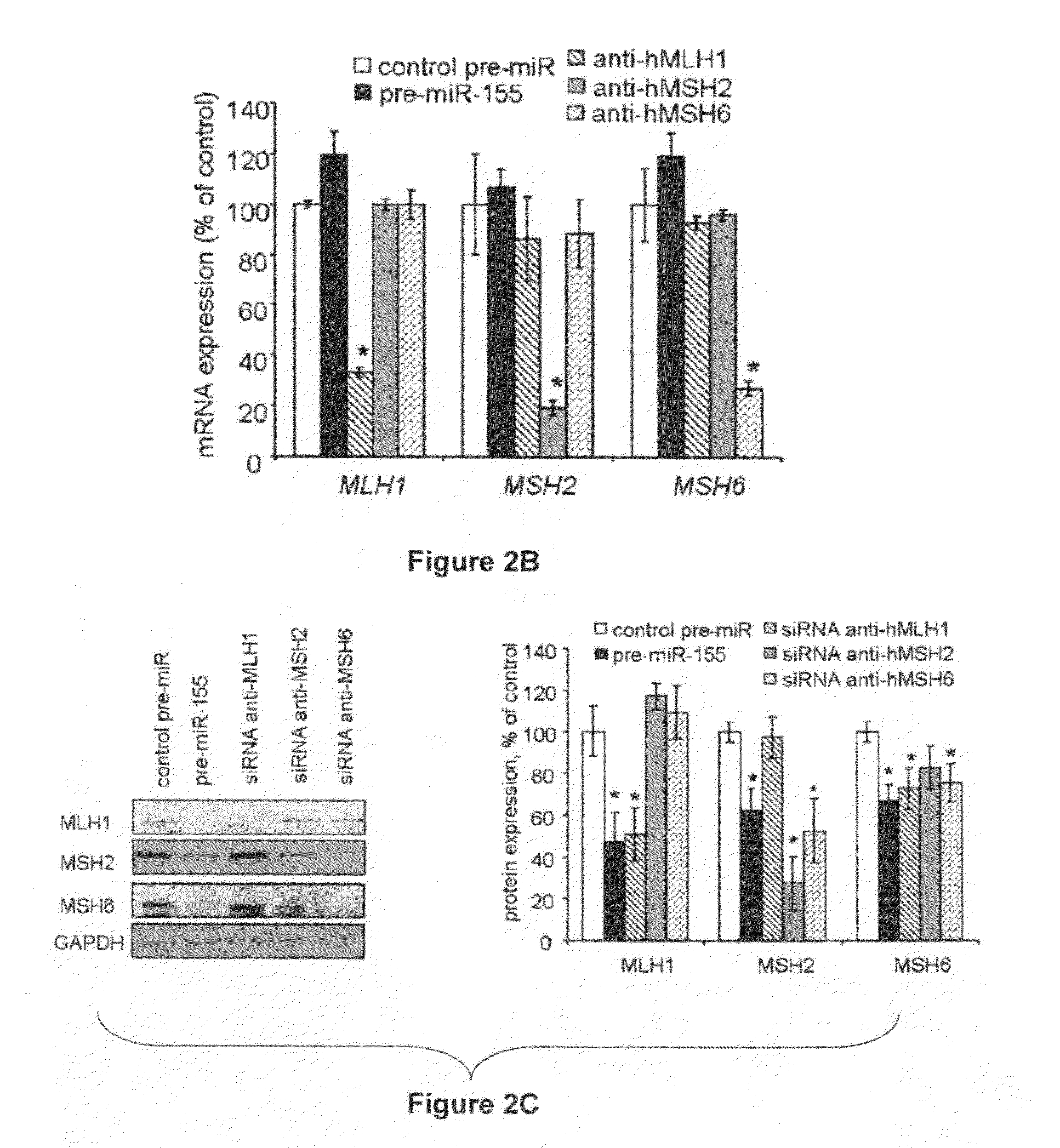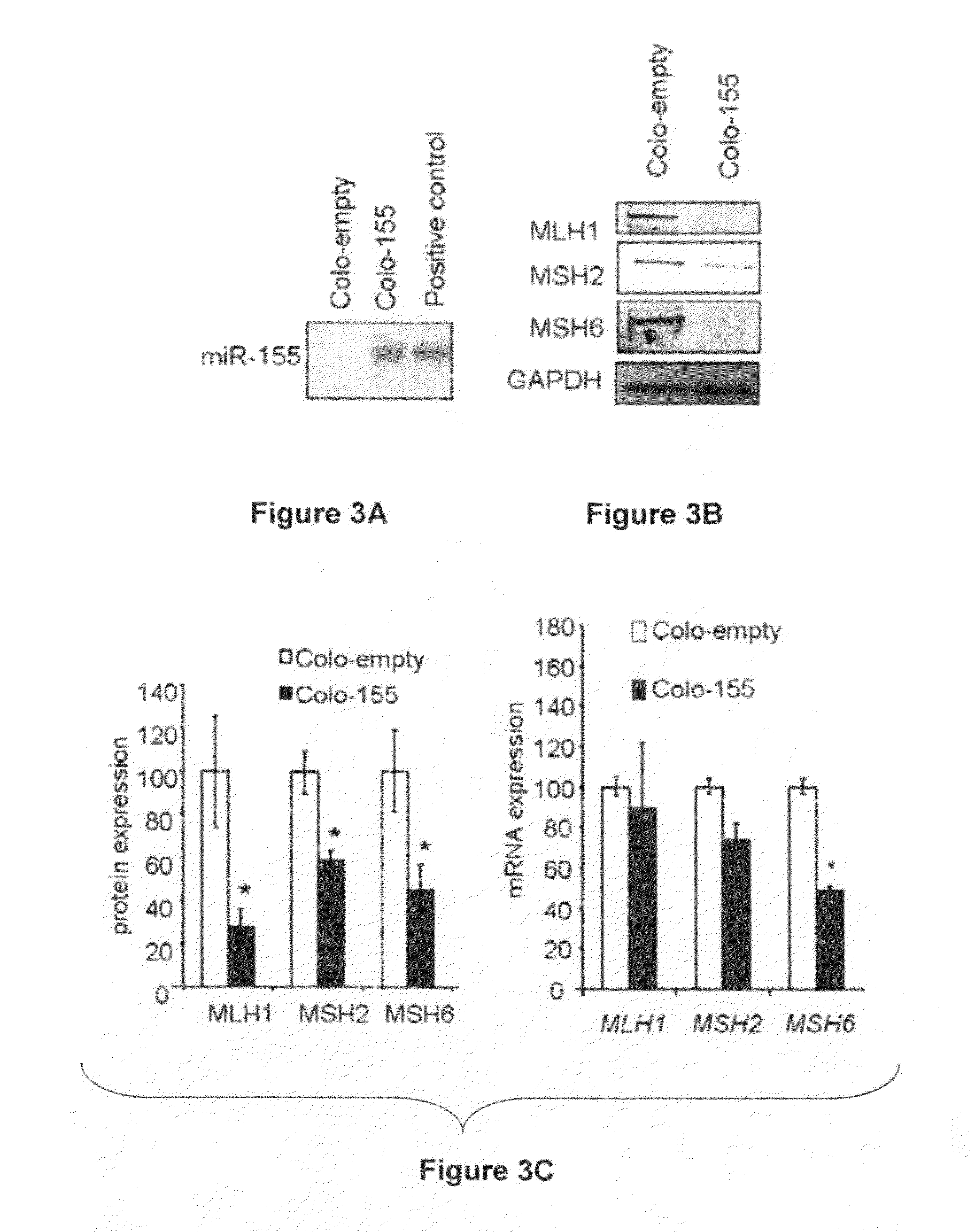Materials and Methods Related to Modulation of Mismatch Repair and Genomic Stability by miR-155
a technology of genomic stability and material and method, applied in the field of molecular biology, can solve the problems of difficult diagnosis and effective treatment of mismatched nucleotides, and the possibility of mismatches
- Summary
- Abstract
- Description
- Claims
- Application Information
AI Technical Summary
Benefits of technology
Problems solved by technology
Method used
Image
Examples
example 1
[0136]Materials and Methods Used
[0137]Cell Cultures and Transfection
[0138]Colo-320 DM, HCT-116 and DLD-1 colorectal cancer (CRC) cells (American Type Culture Collection ATCC Manassas, Va.) were cultured in RPMI 1640 (Gibco, Carlsbad, Calif.), MV4-11 B myelomonocytic leukemia cells (ATCC Manassas, Va.) and packaging cells 293TN (System Biosciences, Mountain View, Calif.) were grown in DMEM (Gibco, Carlsbad, Calif.). All cells were supplemented with 10% fetal bovine serum (Sigma, St. Louis, Mo.) plus antibiotics. Cells were checked for Mycoplasma contamination periodically and before functional experiments and were always found negative. Cells were transfected in 6-well plates by using Lipofectamine 2000 (Invitrogen, Carlsbad, Calif.) following manufacturer's protocol. For over-expression studies specific miRNA or control precursor oligonucleotides were purchased from Ambion (Austin, Tex.) and used at 100 nM. For silencing experiments miRCURY LNA™ anti-miR-155 or control miRCURY knock...
example 2
[0161]Transfections.
[0162]Colo-320 DM, HCT-116, and DLD1 cells were transfected by using Lipofectamine 2000 (Invitrogen, Carlsbad, Calif.), while MV4-11 Lentiviral vectors for miR-155 over-expression and empty vector were generated by System Biosciences (Mountain View, Calif.) according to the manufacturer's instructions. Microsatellite instability was evaluated by genotyping analysis using diagnostic primers. Genomic DNA from MSI patients was sequenced. Statistical analysis: results are expressed as mean±standard error (S.E.M), unless indicated otherwise. Comparisons between groups were performed using the two-tailed Student's t test. Significance was accepted when p was less than 0.05. Graphpad Prism v5.0 (Graphpad Software Inc.) analysis was used for the Pearson's correlation.
example 3
[0163]hMLH1, hMSH2 and hMSH6 are Targets of miR-155.
[0164]The inventors used in silico prediction models to identify potential binding sites for miR-155 in the mRNA of the core MMR genes. Two putative sites were found in hMLH1 using RNAhybrid (BiBiServ, Germany; NCBI NM—000249.2), one in the 3′-UTR and the other in the coding sequence (CDS) of (NCBI NM—000249.2); one site in the 3′-UTR of hMSH2 using TargetScan (Whitehead Institute, MIT; NCBI NM—000251.1); and one in the CDS of hMSH6 using RNAhybrid (BiBiServ, Germany; NCBI NM—000179.2) (FIG. 1A; FIG. 6).
[0165]As a functional screen the inventors subcloned the coding and 3′-regions including the predicted miR-155 seed regions of MLH1, MSH2 or MSH6 downstream of the luciferase gene and recorded Luciferase protein activity. The inventors used MMR proficient colo-320 DM CRC cells for these studies since they contain a low basal level of miR-155. The Colo-320 DM cells were transfected with the luciferase reporter constructs and with a m...
PUM
| Property | Measurement | Unit |
|---|---|---|
| real time PCR | aaaaa | aaaaa |
| molecular weight | aaaaa | aaaaa |
| molecular weight | aaaaa | aaaaa |
Abstract
Description
Claims
Application Information
 Login to View More
Login to View More - R&D
- Intellectual Property
- Life Sciences
- Materials
- Tech Scout
- Unparalleled Data Quality
- Higher Quality Content
- 60% Fewer Hallucinations
Browse by: Latest US Patents, China's latest patents, Technical Efficacy Thesaurus, Application Domain, Technology Topic, Popular Technical Reports.
© 2025 PatSnap. All rights reserved.Legal|Privacy policy|Modern Slavery Act Transparency Statement|Sitemap|About US| Contact US: help@patsnap.com



